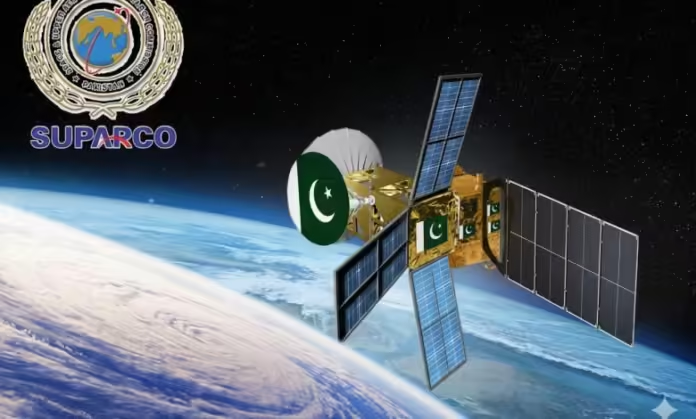Pakistan successfully launches its first Hyperspectral Satellite HS-1
In a historic move towards scientific and technological independence, the Pakistan Space and Upper Atmosphere Research Commission (SUPARCO) has successfully launched the nation’s first hyperspectral satellite, HS-1, from China. The feat is a landmark moment in Pakistan’s space history — a leap that puts the country among the rare nations with hyperspectral imaging technology.
The deployment of the HS-1 satellite is a success that represents Pakistan’s increasing ability to harness space technology to benefit the nation in terms of development, environmental monitoring, and resource management. It also symbolizes decades of study, strategic alliances, and unrelenting dedication to innovation.
The Science Behind HS-1
A hyperspectral satellite works by taking pictures over a broad range of light, outside the visible spectrum. This enables researchers to examine materials, crops, and ground surfaces with amazing accuracy.
As per SUPARCO official release, HS-1’s advanced monitoring and analytical capabilities will transform the way Pakistan monitors and controls its natural and urban landscapes. Right from monitoring deforestation and cultivation patterns to tracking water bodies and mineral resources, HS-1’s data will be enabling planners and researchers alike.
The experts explain that hyperspectral technology allows for improved decision-making through differentiation between the fine differences in surface substances — something conventional satellites cannot do. This makes it especially valuable for monitoring soil health, pollution detection, crop management, and even natural disaster prediction.
A Collaborative Triumph
The HS-1 mission is not only a technological success but also an exemplary model of global cooperation. Launched by China, Pakistan’s strategic space partner, the mission is a testament to the resilience of bilateral collaboration in scientific and defense fields.
It was decades ago that China began to play a key role in assisting Pakistan in building its space capabilities. The HS-1 launch is the newest evidence of the long-standing partnership — one that is founded on mutual aspirations for technological development and sustainable development.
Unlocking New Avenues of Growth
Beyond scientific achievement, HS-1 holds enormous promise for Pakistan’s economic and developmental future. The satellite’s data can drive innovation across multiple sectors — including agriculture, urban planning, environmental protection, and disaster response.
For example, precise mapping and analysis of cropland will maximize crop returns and optimize irrigation management. Urban planners can also employ real-time imagery to inform infrastructure projects and prevent uncontrolled urban sprawl. Water resource officials will also gain from accurate monitoring of reservoirs, rivers, and groundwater basins — an essential edge for a nation that frequently experiences water issues.
With HS-1 in space, Pakistan has laid the groundwork for a bold new era in its space program. SUPARCO’s achievement not only enhances national pride but also raises the hopes of the next generation of scientists and engineers.
Analysts are of the view that ongoing investment in space technology would make Pakistan a regional center for earth observation services and environmental analysis. Future initiatives allegedly involve launching new satellites to enhance the country’s Earth Observation System and increase data-sharing facilities among allied sectors.
A Historic Moment for a Visionary Nation
The HS-1 launch is not just a technical success — it is a testament to Pakistan’s determination, ingenuity, and desire to stand among world nations that are at the forefront of space exploration. It reaffirms the nation’s faith in science as a tool for advancement and autonomy.
As HS-1 starts sending precious information back home, it marks a new era for Pakistan — a time when science, sustainability, and national aspiration meet in the boundless frontier of space.
Visit Pakistan Updates for breaking news, updates, and analysis of the country’s march toward a technologically driven future.




